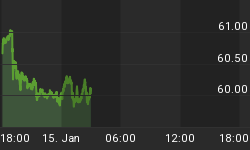The last (but not least) study for this weekend - promised - , unfortunately another one suggesting a significantly better-than-random chance for at least one lower close over the course of the next four sessions.
On Friday's session the SPY (S&P 500 SPDR) closed in the top quartile of its daily trading range on the third consecutive session (to be exact: on Wednesday, November 2, it missed the top quartile only by a fraction, but not affecting respective probabilities and odds). Historically a close in the top quartile of the daily trading range three days in a row right at the start of a month (either the first three sessions of a month or the second to fourth session) provided a remarkable downside edge over the course of the then following four sessions.
Table I below shows all historical occurrences, the SPY's performance over the course of the then following 1, 2 and 4 sessions and the number of sessions until the SPY managed at least one higher | lower close (if any) in the event the SPY closed in the top quartile of the daily trading range three days in a row right at the start of a month (either on the first three sessions of a month or on the second to fourth session).

It is remarkable to note that whenever that setup had been triggered in the past, the SPY posted a least one lower close over the course of the then following four sessions (in this event until Thursday, November 10) on 29 out of 30 occurrences (thereof the last 21) or 96.67% of the time (while it never managed at least one higher close on 9 occurrences), a significantly downside edge over the 68.40% random chance for at least one lower close during a four sessions time frame. In addition, the SPY never posted a 1.0%+ gain the next day on any of those 30 occurrences, and even two and four sessions later 1.0%+ moves on the downside outnumbered 1.0% moves on the upside by a wide margin (6 : 1 and 7 : 2 respectively).
Whenever buyers drove prices higher back to the top of their daily trading range on (at least) three consecutive sessions right at the start of a month in the past, buying power had been regularly exhausted at least over the short-term.
With respect to the then following session (in this event on Monday, November 7), the setup shows a t-score vs. chance of -3.42 and a t-score vs. market of -3.66 (significantly above the critical +/- 1.645 level), indicating that there is a very low probability that the downside edge occurred by pure chance only.
Successful trading,
Disclosure: No position in the securities mentioned in this post at time of writing.
















